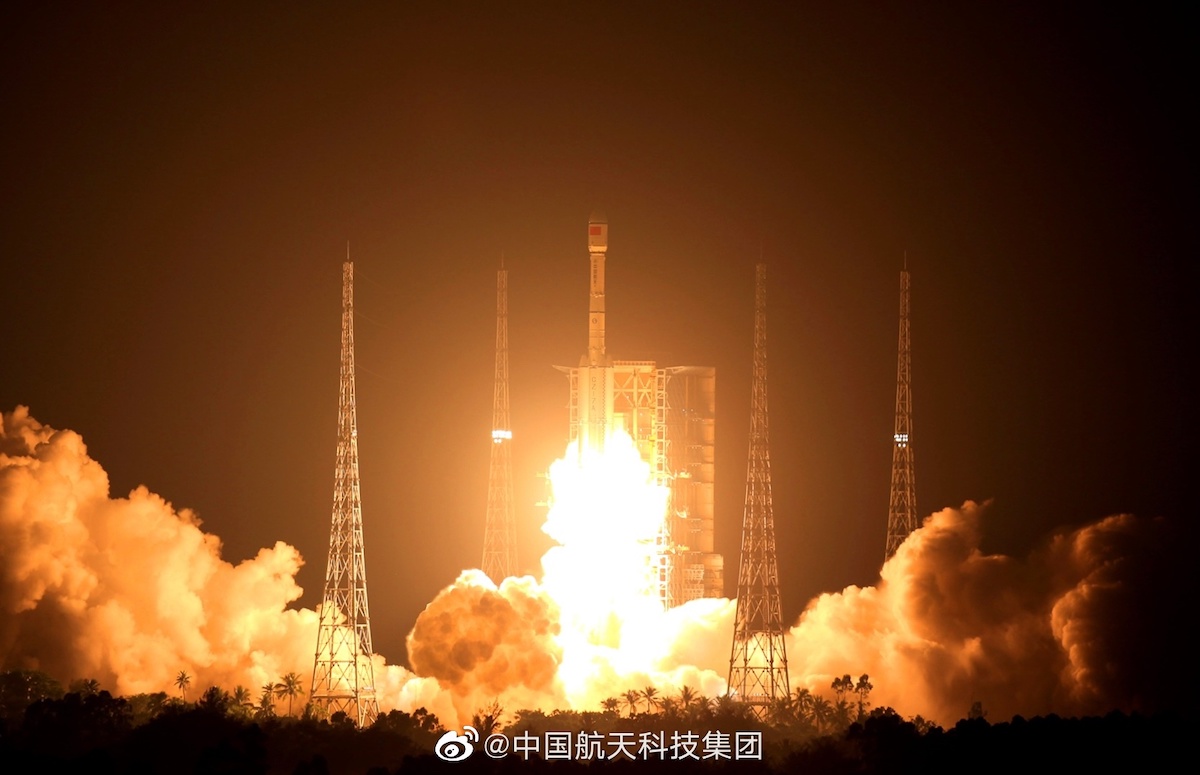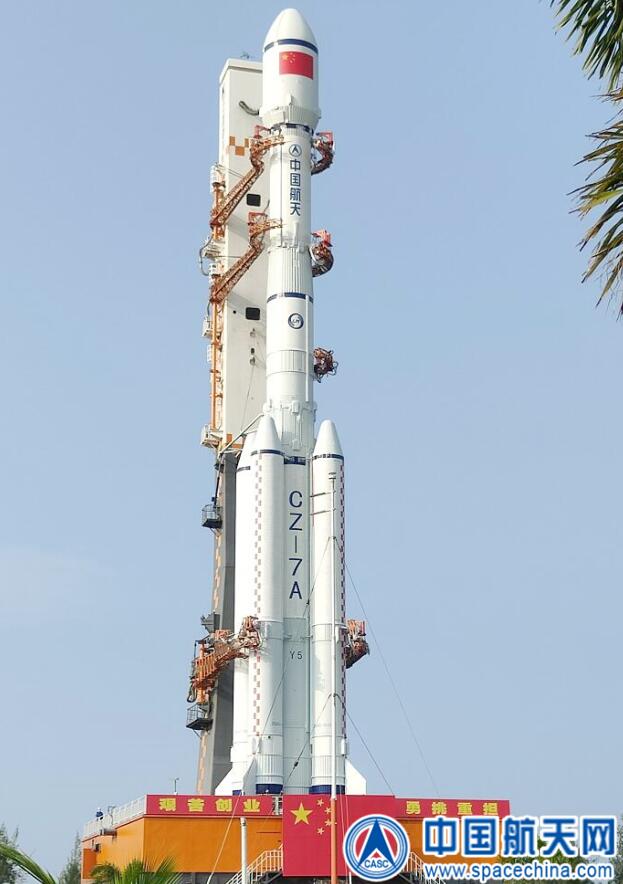Space News & Blog Articles
Chinese Long March 7 rocket launches military communications satellite
 A Long March 7A rocket lifts off from the Wenchang launch bae with the Zhongxing 1E military communications satellite. Credit: CASC
A Long March 7A rocket lifts off from the Wenchang launch bae with the Zhongxing 1E military communications satellite. Credit: CASC
One of China’s newest rockets, the Long March 7A, launched Tuesday with a military communications satellite, potentially signaling the start of a transition of launches for the country’s armed forces from aging booster designs with toxic propellants to newer rockets with more environmentally friendly fuels.
China’s state-run space program does not announce details of its civilian launch schedule far in advance, and details of the country’s military satellite missions are even more opaque. The Chinese Zhongxing 1E communications satellite launched this week rode a Long March 7A rocket into orbit, while previous Zhongxing military missions launched aboard the Long March 3 family of rockets.
The Long March 7A rocket with the Zhongxing 1E spacecraft on-board launched from the Wenchang spaceport on Hainan Island, China’s southernmost province, at 9:18 a.m. EDT (1318 GMT) Tuesday.
The 197-foot-tall (60.1-meter) launcher headed east from the Wenchang launch base over the South China Sea. Six kerosene-fueled YF-100 engines — two on the rocket’s core stage and four under the rocket’s strap-on boosters — generated 1.6 million pounds of thrust at liftoff. The boosters and core stage shut down and jettisoned a few minutes into the flight, giving way to four kerosene-burning YF-115 engines on the second stage.
A hydrogen-fed third stage next ignited with two YF-75 engines. The third stage deployed the Zhongxing 1E into an elongated geostationary transfer orbit ranging between 122 miles (197 kilometers) and 22,235 miles (35,785 kilometers) above Earth, with an inclination of 13.9 degrees to the equator, according to independent U.S. military tracking data.
The China Aerospace Science and Technology Corp., or CASC, declared the launch a success. CASC is the leading state-owned contractor for China’s space program.
The Zhongxing 1E spacecraft is expected to use on-board propulsion to circularize its orbit at geostationary altitude some 22,000 miles (36,000 kilometers) over the equator.
 Rollout of the Long March 7A rocket to its launch pad before liftoff with the Zhongxing 1E military communications satellite. Credit: CASC
Rollout of the Long March 7A rocket to its launch pad before liftoff with the Zhongxing 1E military communications satellite. Credit: CASC
Independent analysts believe Zhongxing 1E is likely a communications satellite for the Chinese military. Previous satellites in the Zhongxing 1 series launched on rockets part of China’s Long March 3 family, an older generation of launchers that burn a toxic mix of hypergolic propellants — hydrazine and nitrogen tetroxide.
Zhongxing 1E was built by the China Academy of Space Technology, a subsidiary of the state-owned contractors CASC. In a press release, CASC said officials selected the Long March 7A rocket for the launch of Zhongxing 1E due to its “heavy takeoff weight” and the “high vertical center of mass of the satellite.”
The Long March 7 is designed to launch medium-sized satellites, such as Tianzhou resupply ships for China’s space station in low Earth orbit. The Long March 7A variant flies with a reignitable third stage, giving the rocket an ability to deploy satellites — like Zhongxing 1E — heading into higher orbits.
The Long March 7A rocket can carry payloads of up to 15,400 pounds, or 7 metric tons, into geostationary transfer orbit.
China debuted the Long March 7A rocket in March 2020 after two successful flights of the basic Long March 7 configuration in 2016 and 2017. The launch Sept. 13 marked the ninth flight of a Long March 7 rocket, and the fourth in the Long March 7A configuration. It was also China’s 38th space launch attempt so far in 2022.
This email address is being protected from spambots. You need JavaScript enabled to view it. the author.
Follow Stephen Clark on Twitter: @StephenClark1.
When you subscribe to the SpaceZE News Feed, we will send you an e-mail when there are new updates on the site so you wouldn't miss them.

